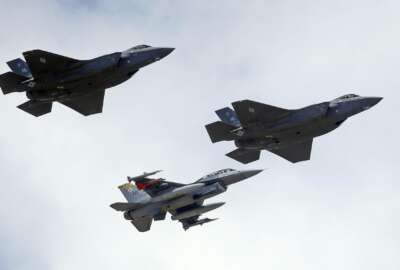
Army begins ‘bold shift’ in planning and upkeep for military bases
Army officials are in the midst of rethinking everything from how they plan and budget for facility sustainment, to which services truly need to be offered on each...
The Army appears to have concluded that a chronic lack of funds for military base upkeep is not a problem that’s going to go away anytime soon. Instead of merely keeping their fingers crossed for an influx of new money, officials are in the midst of rethinking everything from how they plan and budget for facility sustainment, to which services truly need to be offered on each post, camp and station.
“We have been on a failed funding and resource strategy with our installations and facilities,” said Randall Robinson, the acting assistant secretary of the Army for installations, energy and environment. “Over the last 10 years, when money’s been available, we’ve used it for Band-Aid fixes to critical installation needs. That strategy has been corrosive.”
The Army is not alone. Each of the services has made its military bases a bill-payer for several consecutive years in order to fund more pressing readiness concerns like ensuring brigades meet their scheduled training rotations. The Pentagon’s 2017 budget proposal, even if passed as-is, would fund just 74 percent of the military’s base maintenance needs for the year.
In the Army’s case, several consecutive years of fixing things only when they’re broken has created a $10.8 billion maintenance backlog, and 22 percent of the service’s facilities are in poor or failing condition.
Robinson told a conference hosted by the Association of the U.S. Army that officials have committed themselves to taking a less “reactionary” approach to recapitalizing facilities. Instead, he said the Army is exploring new processes to think systematically about exactly what its bases will need to do over the long run, much in the way it thinks about the future makeup of combat formations.
“It will be modeled,” he said. “Just as [Training and Doctrine Command] integrates capabilities into the force design, we will have a similar process, and it will be flexible. It will consider stakeholder input, and offer choices to those who work, live and train on our installations. It should allow us to adjust our footprint based on conditions and requirements.”
The bias toward adjustability will place an emphasis on buildings that are designed from their very beginning to be reconfigured to handle different functions at a relatively low cost, instead of demolishing or retrofitting existing structures and constructing new ones each time a particular base’s mission requirements change, said Lt. Gen. Gwen Bingham, the assistant chief of staff for installation management.
“You can think of these like the D.C. Convention Center,” she said. “If you have a facility that you can make into anything you want on the inside by doing some creative restructuring, I think that would be good for all of us.”
And just as the Army’s approach to building and maintaining physical structures is unsustainable within current budget realities, so is the menu of services it offers to soldiers and their families, said Sergeant Major of the Army Daniel Dailey, the service’s most senior enlisted soldier.
Dailey said it’s time for the Army to begin having “adult conversations” about which soldier and family support programs can continue to be performed at government expense. While some programs like health care, child care and spouse employment are consistent demands at every military base, he said the Army can no longer afford to take a one-size-fits-all approach.
“Our soldiers ask for excellent services, and they should,” Dailey said. “But if we look back over the last several years and how much those services are utilized, I think it’s time to give full flexibility to our installation commanders to make the decisions about what they need, based on their geographic location. We’ve been trying to service too much in a domain that’s too large. It’s unsustainable, because we can’t do anything until we resource readiness first. And it’s easy to tie everything our installations do to readiness. You can say that expanded hours at child development centers and after school programs build readiness, and they do. But at the end of the day, we have to remember what installations are for, which is to enable soldiers to fight and win.”
To that end, at least in the near-term, the Army’s facility experts are building new models designed to reprioritize the service’s limited facility sustainment and modernization dollars toward those that are most directly tied to combat readiness.
“We have 33,000 facilities in poor or failing condition, but we’re looking at which of those facilities drive readiness the most,” said Maj. Gen. Ted Harrison, the operations director in the Army’s installation management office. “Is it the runway at Fort Campbell, the physical fitness facility at Fort Bragg or the vehicle maintenance facility at Fort Hood? When you integrate our data on facility quality and the degree to which a facility drives readiness, you can really begin to see where our risk areas are.”
Return to the DoD Reporter’s Notebook
Copyright © 2025 Federal News Network. All rights reserved. This website is not intended for users located within the European Economic Area.
Jared Serbu is deputy editor of Federal News Network and reports on the Defense Department’s contracting, legislative, workforce and IT issues.
Follow @jserbuWFED
Related Stories





